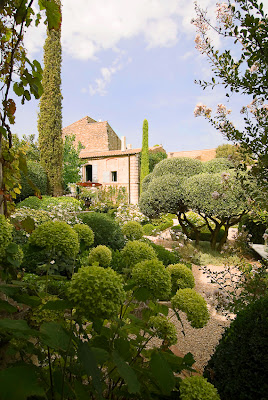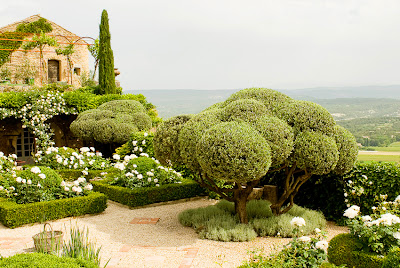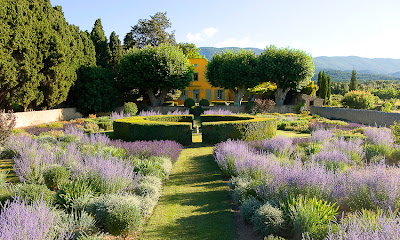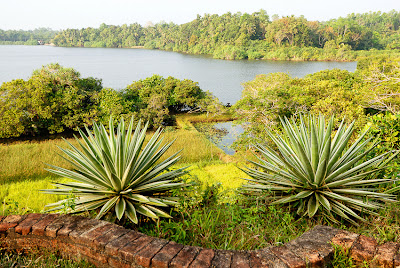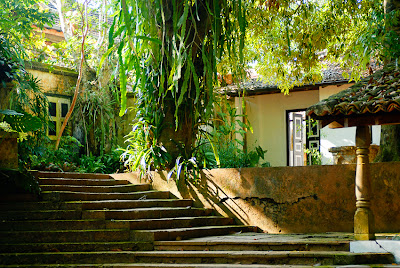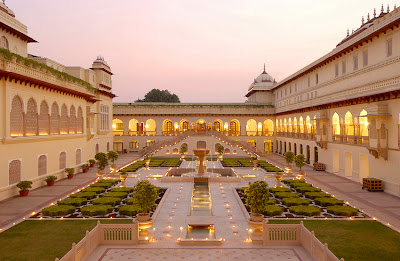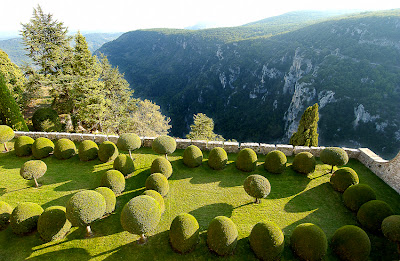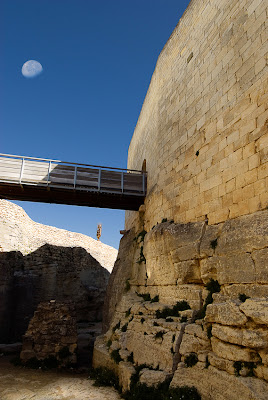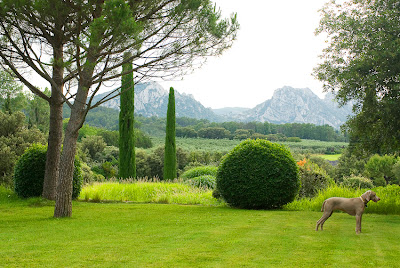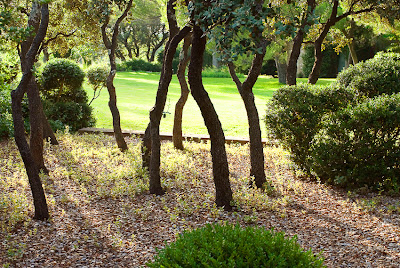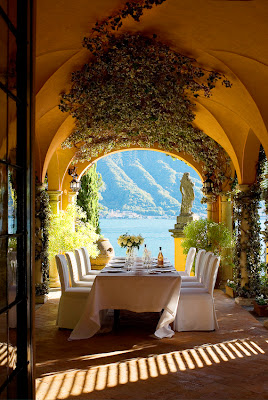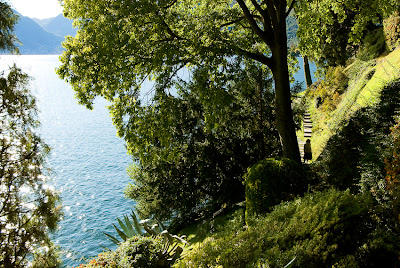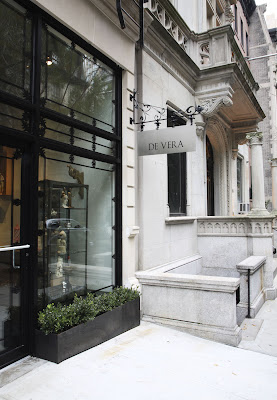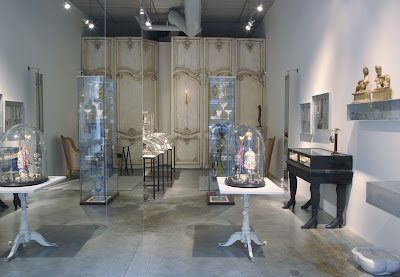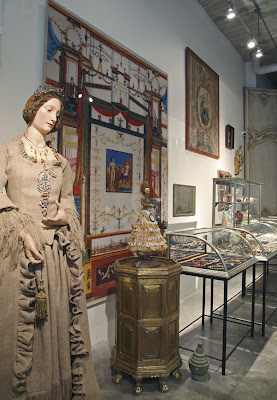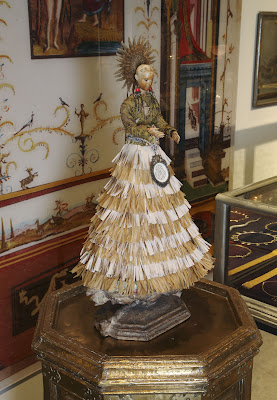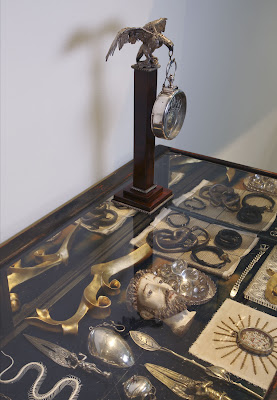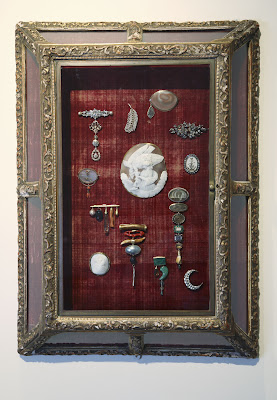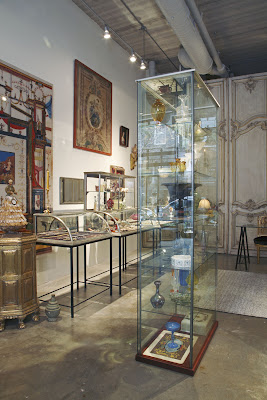I have a wonderful and totally exclusive story and photos for you today!
Over the last few weeks, I’ve introduced the great photographer, Guy Hervais, to my dear and faithful readers.
We’ve seen the stupendously beautiful photographs he took of the new Hyderabad, India, hotel, Falaknuma Palace (one of the great new palace hotels). And we recently saw an edited portfolio of his spectacular interiors photographs, including private images he took recently in India for the legendary Maharajah of Jodhpur, a dear friend. In case you missed these, check and view recent posts on Falaknuma Palace here, and Guy’s Greatest Photos, here.
Now we are encountering the most passionate aspect of Guy’s work—his focus on gardens of the world, as well as his private garden design.
These are some of the most striking, original, and perfect garden images you will ever see.
They are so vivid you can smell the lavender and lemons, feel the fresh air brushing your cheek, and hear birds chirping in the trees. You will sense the first dawn light, and the tender last rays of sunset.
The splendor of these gardens and their particular character and style are captured by an obsessed photographer, He is also knowledgeable about horticulture and garden design.
He will get up in the middle of the night to capture the first light flickering over a garden. Hervais will follow a garden’s progress over years. He understands gardens, loves them, and lets his intelligence and imagination loose on the beauty and glory of these landscapes.
I love gardens that are unique. Unique means exceptional. Exceptional for gardens always means personal.
A garden could be the most simple or the most sophisticated, small or huge, but it should be a personal, private vision.
What is important is its ‘anima‘, its soul, its character, its grandeur of vision, its essence.
It might come from its creator, a hired gardener, the landscape designer, or the owner
When all are united, to bring together design, horticulture, style, originality, beauty, it’s a masterpiece.
—photographer Guy Hervais
I recently had a cozy chat with Guy. He’s enthusiastic, passionate, witty, lovely, and a genius photographer.
DDS: Guy, how did you get started photographing gardens?
GH: I have had the chance to visit many unique, world renowned, completely hidden or unknown gardens, to produce stories for magazines such as French Vogue, House & Garden international editions and travel publications.
With time, it became so natural to me, that I decided to pay homage to these discoveries, creating Garden-Secret, my studio dedicated to bespoke books for owners to offer to their friends.
Starting with photography, I manage the art direction from the layout to the end of the printing. My goal is to create the most beautiful books, as unique as their owners.
DDS: Tell us about your own garden in Provence.
GH: AT Le Pavillon de Galon, my residence and studio, we have created several gardens, all inspired by the incredible surrounding landscape.
The main garden, ‘Le Jardin à la Française’, was originally an abandoned prairie and now fronts the house.
Within its closed walls, 80m by 40m, we decided to design an historical modern garden with a blue and green color palette and balanced planting using very sophisticated shapes and natural essences from the wild mountain behind us.
We love to sit on our terrace in the afternoon and admire it and wonder at our divinities, a series of trees that are over 300 years old.
I have planted a young orchard (we have now about 80 different fruit varietals). There is a spiral planted with olive trees.
We created an avenue of alternating pines and brooms, called ‘Les Champs Elysées’.
This is Provence, so naturally we have a fig orchard and our wine, a Côte du Luberon called Hocus Pocus (produced on a tiny scale with only 1000 bottles per year).
DDS: Tell us about the gardens of the eco architect Geoffrey Bawa, in Sri Lanka.
GH: For years now, I have traveled regularly to India and Sri Lanka to get inspiration related to nature and spirituality.
When there, I meet extraordinary artists, architects and very original characters. Among them, I’m passionate about the works of Sir Geoffrey Bawa, one of my very dearest masters. He always finds the perfect relationship between the vegetal and architecture world (where the outside is inside and the inside is outside).
Perfection. True enlightenment.
DDS: I adore the sculptural garden in Menerbes. It was created by an American woman, very private and is a vision of simply green grass, sculpted box, lavender, and limestone. It is so peaceful.
GH: I adore the sculptural gardens created by an inspired American lady, built on the cliffs and rocks of the beautiful Ménerbes village, once the artists Picasso’s, Dora Maar's, and Nicolas de Stael’s prefered places on earth.
Here you feel how style is mastered.
A strong, beautiful and humble dedication to Beauty and Life.
“I spend a lot of time cultivating my own garden. I used to say that my only ‘dictator’ is my garden.”—Guy Hervais
DDS: You travel the world, Paris, Jodhpur, Rome, Milan, London. GH: My garden is my absolute priority. Nothing can really wait. I have a vision and I’m obsessed.
Here I work with some help, shaping, pruning, digging. I’m very much aware ‘gardening’ doesn’t simply mean a spade, a rake, a mower.
It is soul and it gives back at every moment: new energy, new creation, new thought, strength, inspiration.
It’s important for me and my work.
It gives new vision and insight.
DDS: You have a focused and very elegant plant palette.
GH: I adore all natural plants (not hybridized or artificial). All colors, all shapes (except spiky or sharply formed plants). Everything depends on where the garden is located, if it’s open or closed to the landscape, in which region, the soil, its orientation.
All these details are extremely important; they seem endlessly complicated but at the same time they are so simple and are breathtaking in their simplicity.
When creating some garden designs for my clients and friends, I keep reassuring them to give a strong structure to my creation. The ‘bones’, the form and the structure are like the architecture of the garden.
All the rest follows naturally and gets more impressive over time as it grows. Time is the natural key for seeing a garden grow in harmony.
I have for many years particularly admired a very ‘baroque’ tree, named ‘Sophora Japonica’, and an old variety of almond trees named ‘Princess’, which I have just planted. I am enjoying watching them grow.
DDS: Current work?
GH: For one year, I’ve been working for an extraordinary American lady, photographing her gardens in every season, near St Remy de Provence. We are creating a book.
At the moment, I’m working on layouts and then the printing will start, undertaken by excellent craftsmen.
Another book, an art object in a large format, I’m working on, in several volumes. It is about a site from prehistory to the present owners, following the great moments, which have all happened there.
DDS: Projects?
GH: Photography for a 1,000 year-old chateau, inside and outside for its new owners (Provence). Consulting for two palazzo gardens (Venice). Consulting for the beaches on the Lido island (Venice). Photography and work on Moghul gardens (India and Iran).
DDS: Sources of inspiration for your gardens?
GH: Some masters in no particular order: Louise de Vilmorin, Rabindranath Tagore, Goethe, Cézanne, Giuseppe Penone, Le Nôtre, J.H.Fabre, Andy Goldsworthy, Russell Page, Derek Jarman, William Blake, Pierre Lieuthaghi, Marie-Laure de Noailles, Jean Jacques Rousseau, Satyajit Ray, Jean Renoir.
DDS: Favorite garden memory?
GH: Last year, some Indian classical musicians played at a private concert for the Maharajah of Jodhpur.
They later came to Provence to perform traditional morning and evening ragas, a kind of meditation/holy performance, during ‘garden open’ days. This Indian music, so beautifully and soulfully performed was pure magic. It was a sublime experience, mixed with the visions of plants, shade of the trees, the sunlight flickering, the warm air, and the whispering sound of the water running in the ancient pools.
DDS: Tell us about Garden-Secret:
GH: With Garden-Secret my private publishing company, I work with a team, all experts on gardens.
To create private books on commission. For example, several of the gardens shown here in this article, have been published privately in books, by their owners. It is a way of capturing, for all time, the ephemeral beauty of the gardens. www.garden-secret.com
CREDITS:
All images are by French photographer, Guy Hervais, used with express permission.
www.guy-hervais.com
Guy Hervais and his wife, Bibi Gex run the glorious Le Pavillon de Galon, a lovely country inn in the dramatic Luberon region of Provence. Visit the gardens and stay for a weekend, a week, a month. Check on www.pavillondegalon.com and learn more about the region, exploring the region, and the local cuisine.
